Standard Industrie REWCASEV RECEIVER FOR AIRCHOC WIRELESS APPLICATION User Manual NOTREW US F1
Standard Industrie RECEIVER FOR AIRCHOC WIRELESS APPLICATION NOTREW US F1
User Manual
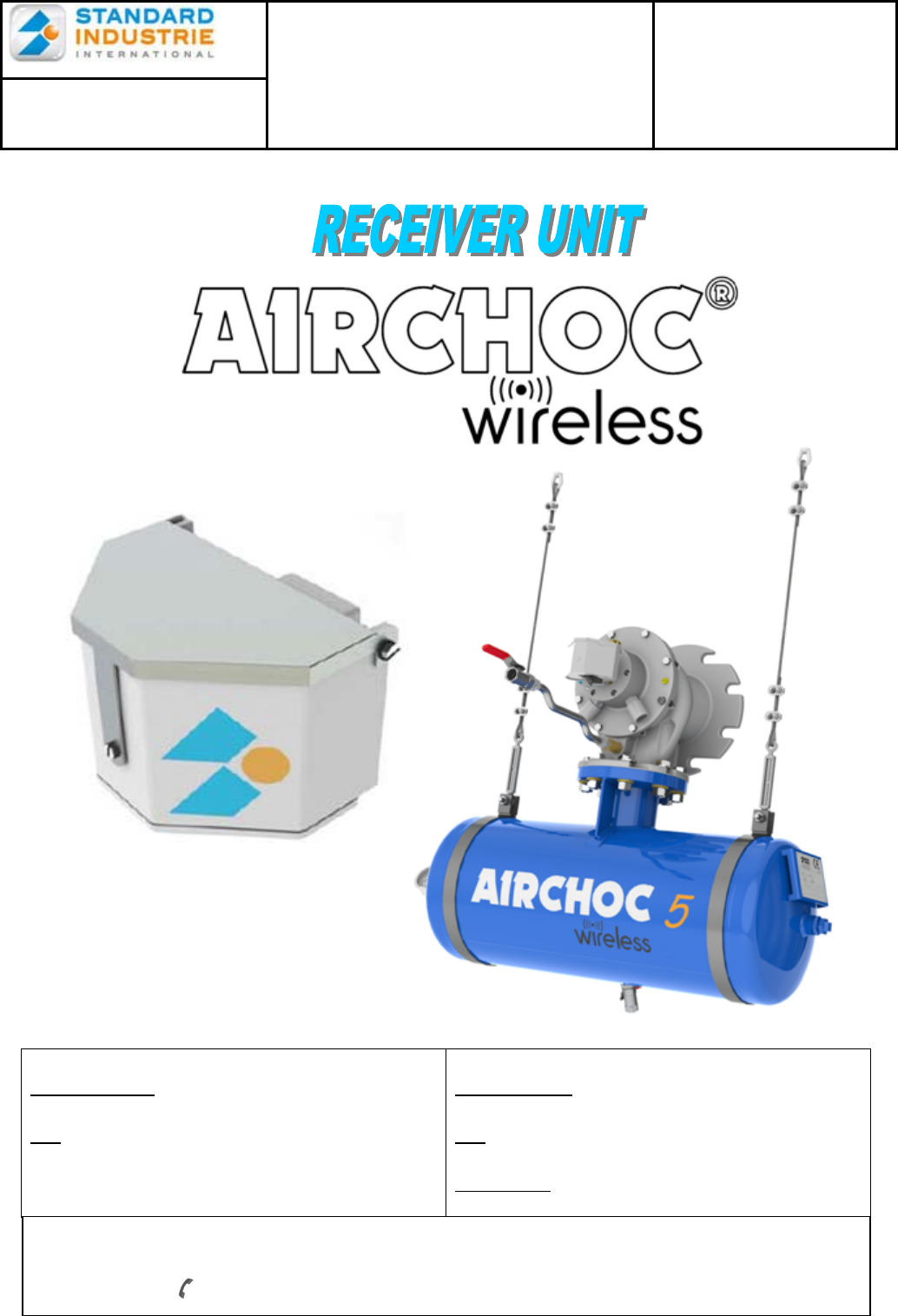
NOTREW-US.doc 1 December 6th, 2012
Produced on: December 6th, 2012
By: DESIGN OFFICE
Checked on:
By: BOISLEUX.M
Signature:
USER
MANUEL
Revision Level: F1
NOTREW-US Date: December 6th, 2012
HEAD OFFICE- Standard Industrie : 139-141 rue du Luxembourg-BP50207 59054
ROUBAIX CEDEX 1- FRANCE
+33 (0)3 20 28 32 32 / @ : info@standard-industrie.com

NOTREW-US.doc 2 December 6th, 2012
CONTENTS
1 Principle of Airchoc Wireless page 3
2 Receiver unit characteristics page 4
2-1 Explanation of the symbol on the label Page 4
3 Receiver unit Batteries page 4
3-1 Recommandation page 4
3-2 Device Recycling (environment) page 4
4 Warranty page 4
5 Wireless AIRCHOC receiver unit start-up page 5
6 Instructions page 7
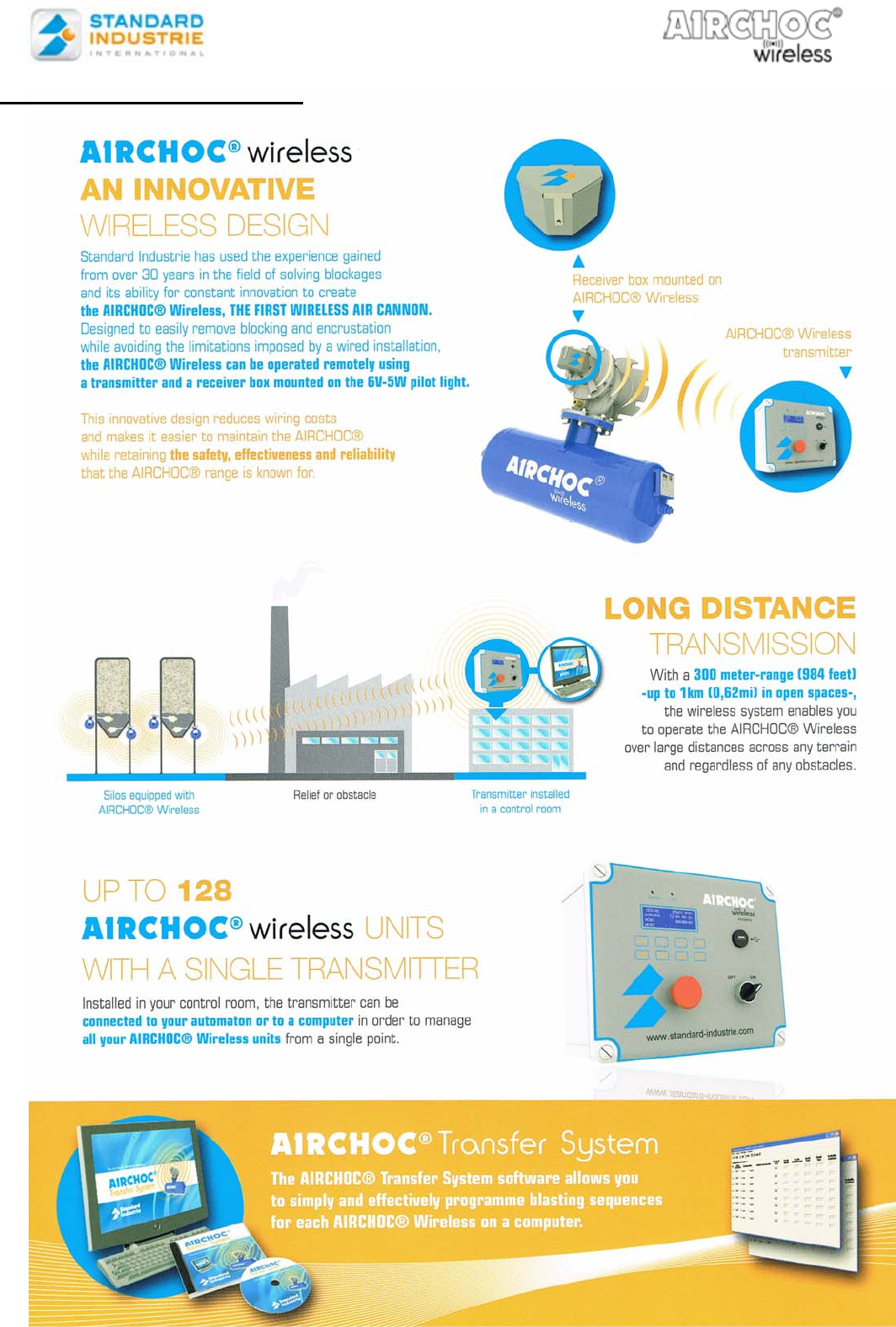
NOTREW-US.doc 3 December 6th, 2012
1- Principle of Airchoc Wireless
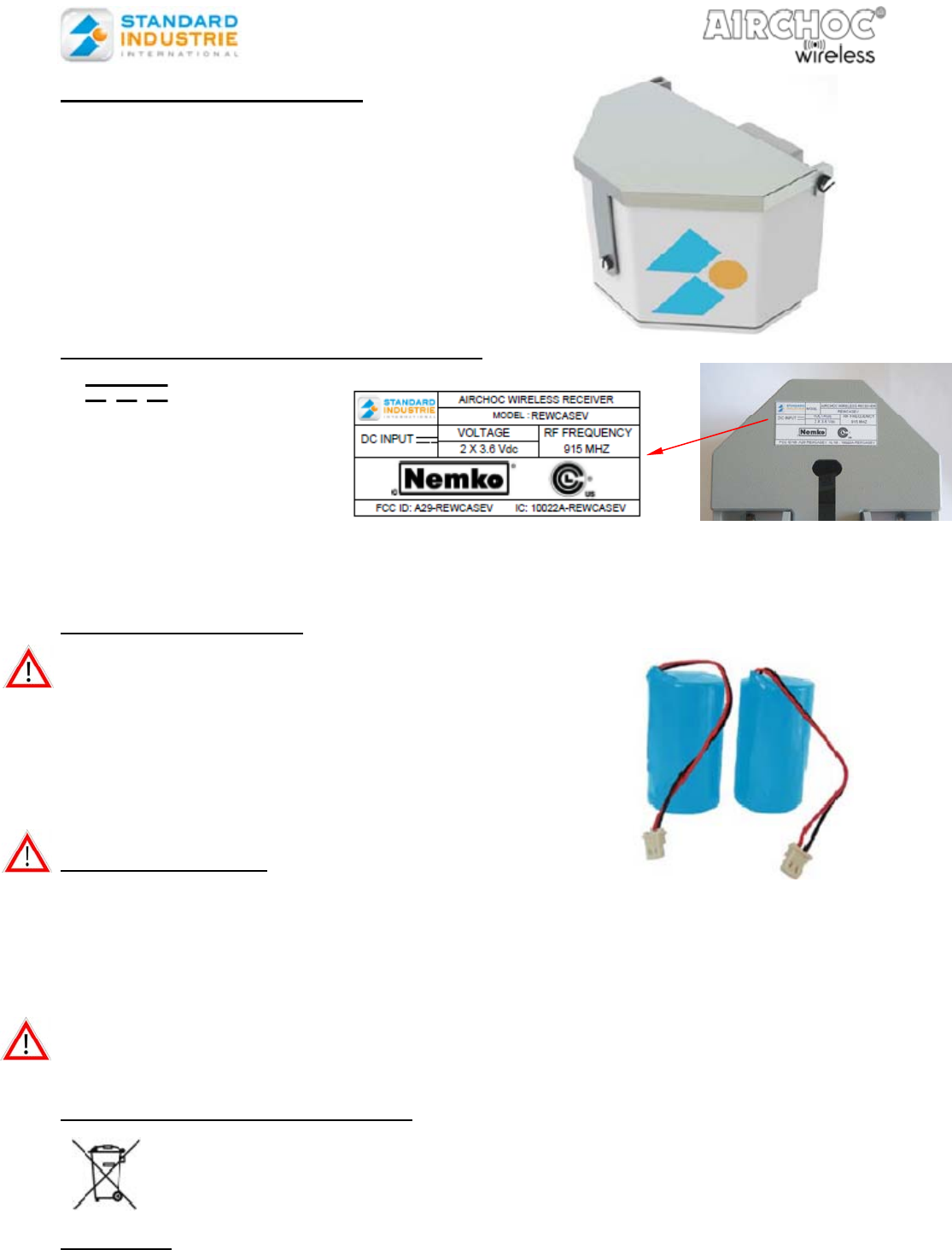
NOTREW-US.doc 4 December 6th, 2012
2- Receiver unit characteristics
Material : ABS V0 + Aluminum
Dimensions : 100 x 114 x 83 mm
Weight: 195 g without batteries
Supply voltage: 2 x 3,6Vdc
Service temperature : - 20 to +70°C
Humidity : no more than 80%
Max altitude : e.g up to 2000 m
Pollution degree : 3
Equipped with an 915 MHz RF module
2-1 Explanation of the symbol on the label :
Direct current
This device complies with Part 15 of the FCC Rules. Operation is subject to the following two
conditions: (1) this device may not cause harmful interference, and (2) this device must accept
any interference received, including interference that may cause undesired operation.
3-Receiver Unit Batteries
You must use only our batteries,
Standard Industrie reference: BATACW
Voltage : 7.2V-13Ah (2 x 3.6Vdc)
Type : Lithium-ion non rechargeable
Service temperature : - 20 to +85°C
Max. storage temperature: 30°C
Weight : 240 g for both
3-1.Recommendation
Do not recharge, short-circuit,
dispose of in fire,
expose to temperatures greater than 100°C,
immerse, or alter its shape.
Any one of these actions may damage the battery, or cause it to combust or explode.
Store in a dry place at constant temperature.
Attention : it is forbidden to clean the receiver in the high-pressure water.
The protection is impaired if equipment is used in a manner not specified by the
manufacturer.
3-2. Device Recycling (environment)
4. Warranty
The warranty does not cover damage caused by external factors such as lightning, flooding, and fire.
No warranty shall apply if the device was repaired or modified by the purchaser or if its serial number
has been modified, removed, or rendered illegible.
Comply with the instructions for use contained in the manual.
At the end of the batteries’, receiver units’, or Control panel’s service life, you must not
dispose of these produces with ordinary household waste. They must be disposed of at an
electrical and electronic device recycling point. Comply with applicable regulations in your
country.
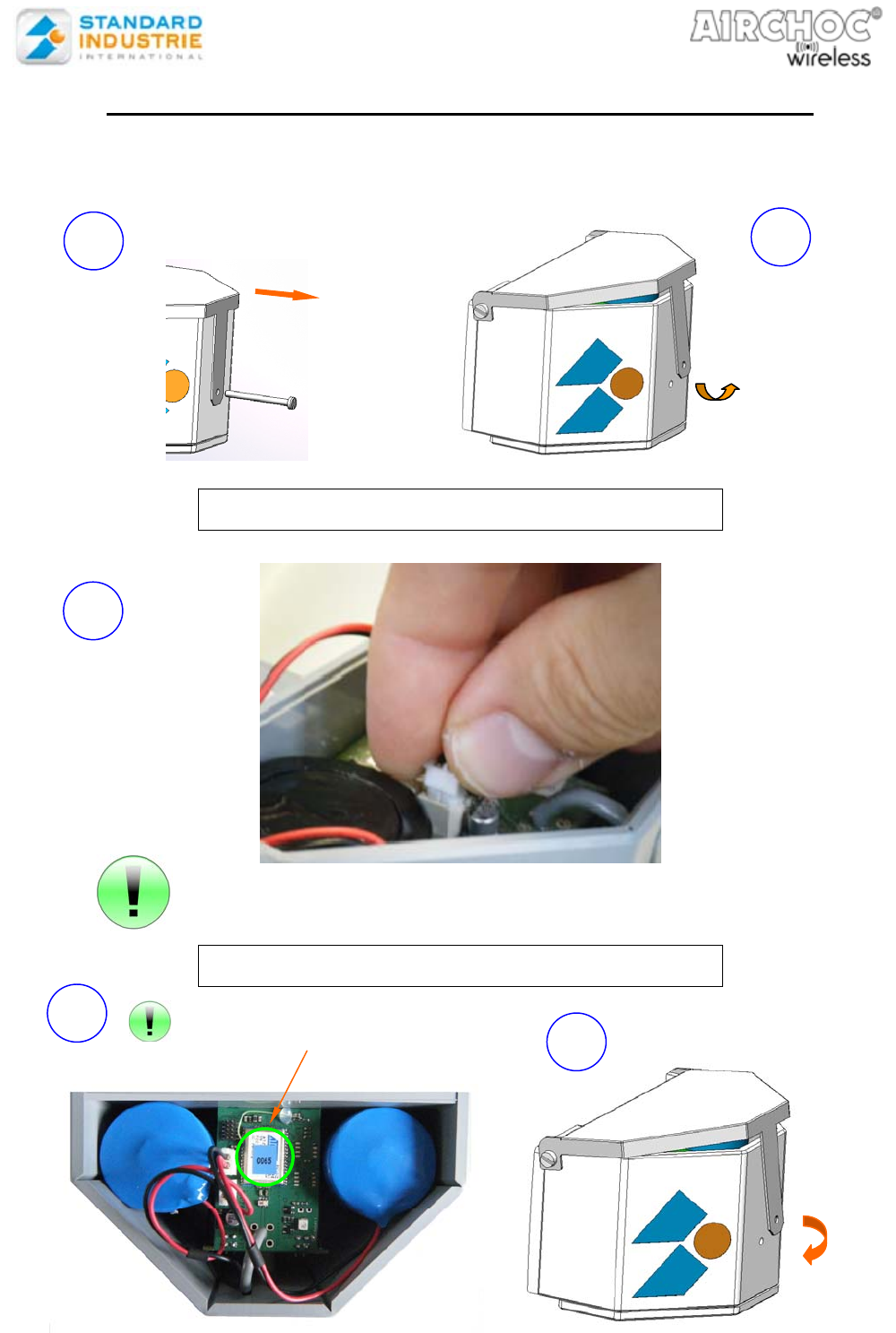
NOTREW-US.doc 5 December 6th, 2012
5- WIRELESS AIRCHOC RECEIVER UNIT START-UP
Use a flat screwdriver with a max. blade thickness of 0.5.
Press on the connectors until you hear a click
*The MAC address will be used when registering the Airchoc and for communications
between the Control panel and the receiver unit
CONNECT THE BATTERIES
CLOSE THE COVER
3
Remove the screw
Open the
cover
1 2
Attach the battery
connectors to the
device. Direction is
unimportant. The
batteries must be
identical.
4 5
Find the MAC* address
4 characters
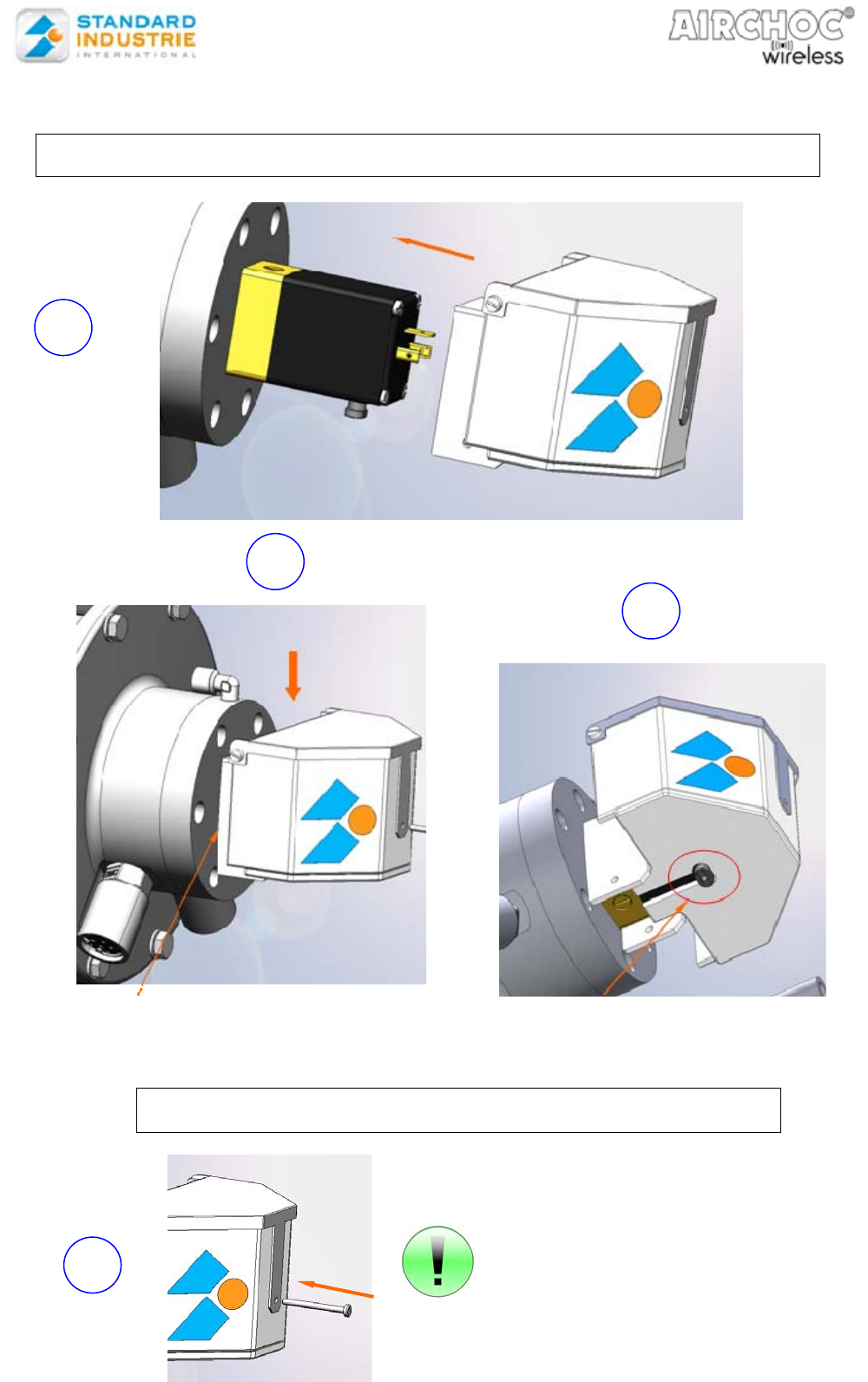
NOTREW-US.doc 6 December 6th, 2012
The housing must abut the base Ensure than the manual solenoid valve
control is correctly positioned in relation to
the oblong hole
6
7
8
ATTACH THE RECEIVER UNIT HOUSING TO THE SOLENOID VALVE
TIGHTEN THE HOUSING TO THE SOLENOID VALVE
Compress the cover until you are in
front of the screw hole.
The screw will tighten the housing
through the solenoid valve
9

NOTREW-US.doc 7 December 6th, 2012
6 – Instructions
Changes or modifications not expressly approved by Standard Industrie could void the user's
authority to operate the equipment.
This equipment has been tested and found to comply with the limits for a Class B digital
device, pursuant to part 15 of the FCC Rules. These limits are designed to provide
reasonable protection against harmful interference in a residential installation. This
equipment generates, uses and can radiate radio frequency energy and, if not installed and
used in accordance with the instructions, may cause harmful interference to radio
communications. However, there is no guarantee that interference will not occur in a
particular installation. If this equipment does cause harmful interference to radio or television
reception, which can be determined by turning the equipment off and on, the user is
encouraged to try to correct the interference by one or more of the following measures:
—Reorient or relocate the receiving antenna.
—Increase the separation between the equipment and receiver.
—Connect the equipment into an outlet on a circuit different from that to which the receiver is
connected.
—Consult the dealer or an experienced radio/TV technician for help.
This equipment complies with FCC’s radiation exposure limits set forth for an uncontrolled
environment under the following conditions :
1. This equipment should be installed and operated such that a minimum separation distance
of 20cm is maintained between the radiator (antenna) and user’s/nearby person’s body at
all times.
2. This transmitter must not be co-located or operating in conjunction with any other antenna
or transmitter.